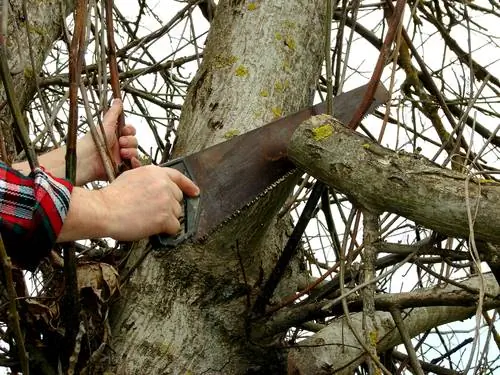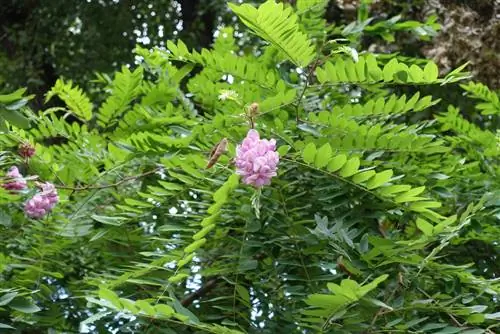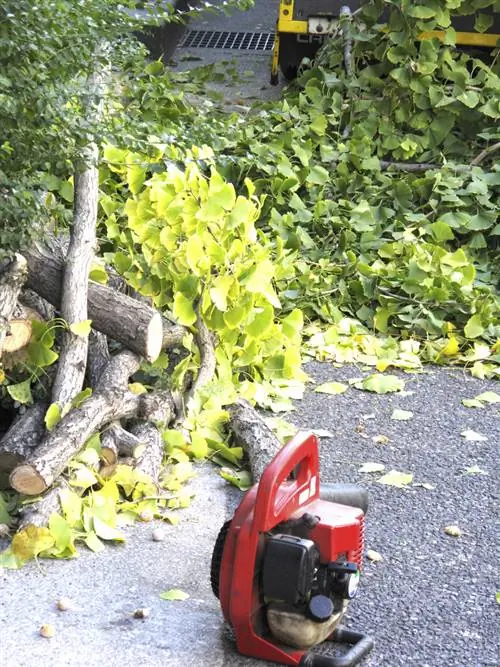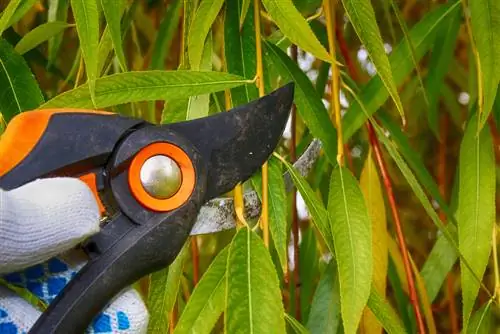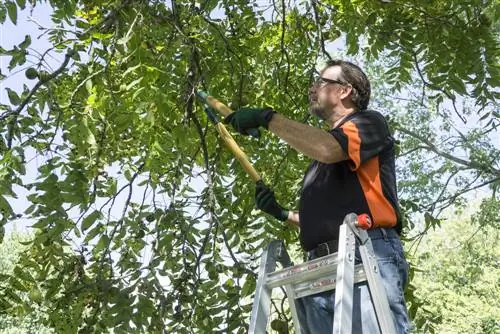- Author admin [email protected].
- Public 2023-12-16 16:46.
- Last modified 2025-01-23 11:21.
Massive sap flow makes pruning the walnut tree a horticultural balancing act. In any case, cutting fruit wood to increase the yield of a walnut is not worth the effort. Gardeners only use pruning shears to regulate a sprawling crown. These instructions explain the correct cut at the ideal time.

When and how do you cut a walnut tree?
A walnut tree should be cut in autumn, between the beginning of October and mid-November, as the sap flow is then at its lowest. Remove dead and awkwardly positioned branches, cut back thin shoots and shorten thicker shoots to 10 to 20 cm long cones. Wild shoots should be removed promptly.
The best time to prune is in autumn
Spacious crown expansion is the most common reason for cutting a walnut tree. A massive flow of sap pouring out of cuts causes headaches. The problem is familiar to many hobby gardeners with the ever-popular ball maple.
A bleeding walnut tree will lose its scariness if you prune it in the fall. From the beginning of October to mid-November, the sap flow drops to its annual low, so there is no need to fear any significant trickles from open wooden bodies.
Prune walnut every 5 to 10 years
If you can't give your walnut unlimited space, you should regulate the crown expansion regularly. By cutting the branches at intervals of 5 to 10 years, you avoid radical interventions in growth, such as rejuvenation pruning. How to cut correctly:
- At the beginning, thin out dead, frozen and unfavorably positioned branches
- Cut off thin shoots on astring
- Cut shoots from 5 cm in diameter back to 10 to 20 cm long cones
- Overhanging, too long and broom-like branches lead to an internal side branch
- Remove steeply upward competitors to the middle or leading branch
You can mitigate the disadvantages of larger cuts by cutting the relevant branches back to cones. This special cut prevents the wood from drying back into the depths and promotes new growth. Young shoots then sprout from the cones in all directions. Select one or two promising branches. Remove excess shoots along with the dried cone residue next fall or the fall after that.
Remove wild shoots promptly
The long time intervals of up to 10 years do not imply that a walnut tree is not cut at all in the meantime. The focus is on refined varieties that consist of black walnut as a wild rootstock and a weaker growing crown.
The rootstock in the form of wild shoots demonstrates its powerful growth. These sprout directly from the rhizome or trunk. At a rapid pace of up to 50 centimeters per year, the wildlings strive to overgrow the noble walnut tree crown. This brazen activity can be stopped by removing a wild shoot as soon as possible.
Cut trunk shoots vertically just before the bark. Tear off shoots from the root disc. This procedure has the advantage that you remove the majority of the tissue and effectively prevent new growth.
Tip
Before cutting out a competing shoot on the center shoot, consider a more promising option. You can turn steep shoots in a favorable position within the crown into valuable fruit wood. To do this, tie the steep shoot down to an angle of around 45°. Growth calms down and your walnut tree finds leisure to form flowers and nuts at this point.

